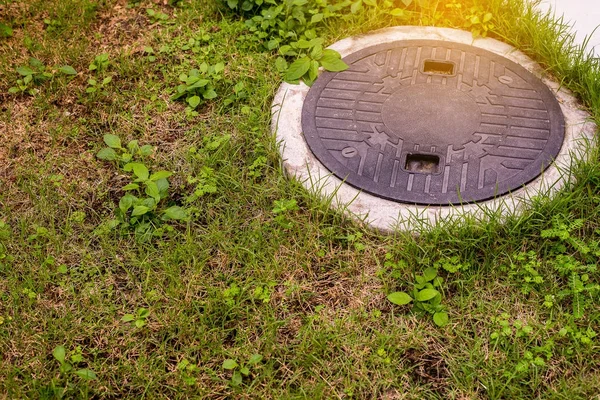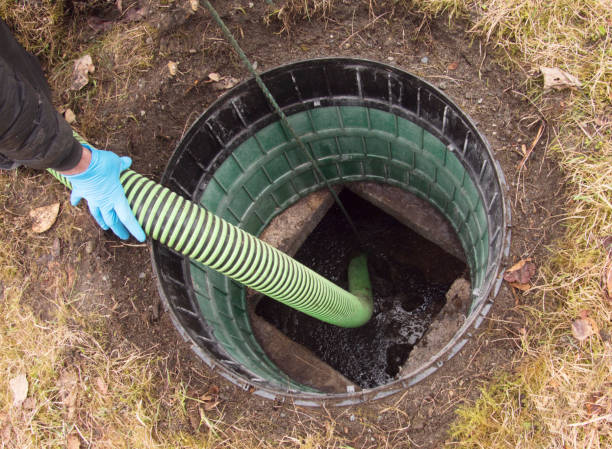BLOGS
Septic Tank Installation Cost
Installing a septic tank is necessary if your house or business is not connected to a public sewer system. Learn about the average septic tank cost of installation here.
Installing a septic tank is a significant project that demands careful planning and budgeting. This article offers a deep dive into the costs associated with septic tank installation to help homeowners make informed, financially savvy decisions.
An Overview of Septic Tank Installation
Definition of Septic Tank
A septic tank is an essential and critical component of a septic system, playing a vital role in effectively treating wastewater for properties not connected to a public sewer system. It acts as a primary receptacle that collects and temporarily stores wastewater from various sources within a property.
Through a series of processes, the septic tank separates and decomposes solids, while the liquid portion undergoes further treatment before being released into the surrounding soil. This sustainable and self-contained system ensures proper sanitation and environmental protection for residential and commercial properties, contributing to a healthier and cleaner community.
Importance of Septic Tanks
Septic tanks are essential for efficient waste management and provide a cost-effective and environmentally friendly solution to household waste disposal. This is particularly beneficial in rural or remote areas where traditional sewage systems may not be available.
By effectively treating and containing wastewater on-site, septic tanks help prevent pollution and protect the environment. They play a crucial role in maintaining such areas’ hygiene and sanitation standards, ensuring the well-being and health of the communities residing there.

Core Components of Installation Cost
The total cost of a new septic tank system comprises several elements, each carrying its own financial implications. Three main components greatly influence the overall expense: the septic tank’s type and size, the installation process’s complexity, and the necessary permits and inspections. Let’s delve deeper into each of these components.
Material Costs
- Plastic Tanks: Plastic tanks are a cost-effective, lightweight solution for various applications. With prices ranging between $600 and $800, they offer homeowners an affordable choice without compromising on quality. These tanks are designed to be durable and resistant to corrosion, making them suitable for long-term use.
- Concrete Tanks: If you’re looking for a tank that can withstand the test of time, concrete tanks are an excellent option. Although they are heavier compared to plastic tanks, their durability and robustness make them worth the investment. With prices ranging from $850 to $2,500, these tanks offer long-lasting performance and can handle even the most demanding conditions. Whether you need a tank for residential or commercial use, concrete septic tanks are a reliable choice.
Labor Costs
Labor is a significant factor when it comes to the overall expenses of your project. The septic tank costs can range from $500 to $1,500, depending on various factors such as the level of experience of the installer, the complexity of the job, and the geographic location. It’s important to consider these factors and budget accordingly to ensure a smooth and successful installation.
Permits and Inspection Fees
Aside from labor costs, you should also account for the expenses related to permits and inspections. Expect to pay between $250 and $500 for the necessary permits and inspections, which can vary depending on the specific regulations of your municipality. It’s crucial to comply with these requirements to ensure the legality and safety of your project.
Types of Septic Tanks and Their Costs
There are various types of septic tanks, each with its own cost implications. Here we discuss the two common types and their average prices:
Conventional Systems
Conventional systems are highly versatile and can be used in a wide range of soil conditions. They are known for their reliability and cost-effectiveness, with prices typically ranging from $1,500 to $4,000. These systems are popular among homeowners and businesses alike for their ability to provide efficient and sustainable solutions.
Alternative Systems
In areas where specific soil limitations exist, alternative systems are necessary to ensure optimal performance. These systems are designed to overcome challenges posed by unique soil conditions and often require specialized designs and components. As a result, their prices are higher, ranging from $6,000 to $12,000. Despite the higher cost, these alternative systems offer innovative solutions that can effectively address soil limitations and provide long-term benefits.

Factors Influencing Installation Costs
In this section, we’ll analyze the various factors that influence the installation costs of septic tanks. Understanding these elements can help homeowners predict their budget better and choose an installation plan that suits their financial constraints and specific needs.
Soil Type
The type of soil on your property can significantly affect installation costs, as some soils may require more specialized systems or additional work for proper installation. For example, clay soils may require additional excavation and compaction to ensure proper drainage, while sandy soils may require additional measures to prevent excessive leaching.
Tank Size and Capacity
Larger tanks are pricier but necessary for homes with higher water usage. The cost varies proportionally with the tank’s size and the amount of water it can handle efficiently. A larger tank accommodates increased water usage and allows for better retention and treatment of wastewater, ensuring a more effective and environmentally friendly septic system.
System Type
The chosen septic system, whether conventional or alternative, impacts the total cost due to the differences in complexity and components involved. Conventional septic systems typically consist of a septic tank and a drain field, while alternative systems may require additional components such as pumps, filters, or advanced treatment units. The system type selection should consider factors such as site conditions, local regulations, and long-term maintenance requirements.
Essential Maintenance and Repair Costs
Regular Maintenance
Proper and regular septic tank maintenance is crucial to ensure its longevity. By investing in annual maintenance, including inspections and pumping, which typically range from $200 to $400, you can effectively prevent costly repairs or replacements in the future. This proactive approach saves you money and safeguards your septic system’s functionality and overall performance.
Repair and Replacement Costs
When it comes to repairs, the cost can vary depending on the extent of the damage. Minor repairs are generally more affordable, while major repairs or replacements can incur expenses in the thousands of dollars. It’s important to address any issues promptly to avoid exacerbating the problem and potentially incurring higher repair costs down the line. Taking a proactive stance and promptly attending to necessary repairs will help maintain the efficiency and longevity of your septic system.

How to Select a Professional Installer
Selecting a professional installer for your septic tank is a critical decision that influences the quality and reliability of the installation. While you can technically do a DIY septic tank installation, it’s not recommended.
The Importance of Experience in Installations
When it comes to installing systems, opting for experienced professionals may come at a higher cost, but it often guarantees superior and more reliable services. Their expertise ensures that your system functions efficiently for years to come, giving you peace of mind and saving you from potential issues down the line.
Necessary Licenses and Insurance for Installers
To protect yourself from liability and ensure that the septic system installation work meets industry standards and regulations, choosing a licensed and insured installer is crucial. This not only safeguards your investment but also gives you the assurance that the work will be carried out by qualified professionals who adhere to established guidelines and safety measures.
Gauging an Installer’s Reputation with Customer Reviews and Testimonials
One effective way to evaluate an installer’s reputation, reliability, and the quality of their work is by reading reviews and testimonials from previous customers. This provides valuable insights into their track record, customer satisfaction levels, and overall performance, helping you make an informed decision when selecting an installer for your project.
Final Thoughts
Understanding the costs involved when you install a septic tank is crucial for homeowners looking to invest in a new or replacement system. By considering the factors outlined in this guide, you can make a well-informed decision that meets your household’s waste management needs while adhering to your budget constraints. Investing wisely in a septic tank now can save you significant time, money, and stress in the future.
After refining your septic tank system, are you envisioning a life steeped in luxury, comfort, and convenience? Brittany Corporation is your gateway to premium living spaces in the Philippines, where elegance meets functionality. Whether you’re seeking a dream house or an exquisite vacation home, our diverse portfolio promises something special for everyone.
Suggested Read: Timing Is Everything: Why Summer Could Be The Best Time To Sell
Suggested Read: What Are The Different Real Estate Financing Options
Suggested Read: Choosing The Perfect Water Heater For Your Condo
Suggested Read: Scuba Diving 101: In The Know
Suggested Read: Water Heater Installation Cost















